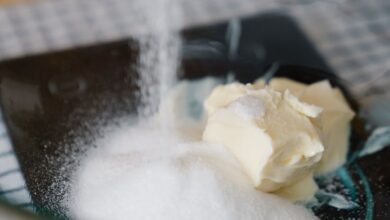How to Choose Lightweight Mixing Spoons
Choosing the right mixing spoon can transform your cooking experience, especially when it comes to whipping up batters, stirring sauces, or blending ingredients. Among the various options available, lightweight mixing spoons stand out for their ease of use and convenience. However, not all lightweight spoons are created equal. With a plethora of materials, designs, and features on the market, selecting the perfect one can be a daunting task. Here’s a comprehensive guide on how to choose lightweight mixing spoons that suit your culinary needs.
Material Matters
The first step in selecting a lightweight mixing spoon is considering the material. Common materials include plastic, silicone, wood, and metal. Each type brings unique benefits to the table.
Plastic spoons are often the lightest option and come in various colors and designs. They are easy to clean and resistant to staining, but they may not withstand high temperatures. Silicone mixing spoons offer flexibility and heat resistance, making them ideal for cooking at higher temperatures without the risk of melting. Wooden spoons, while slightly heavier, provide a classic feel and are gentle on cookware, preventing scratches. Lastly, stainless steel mixing spoons give a modern touch and can be very lightweight, but they may conduct heat, making them less ideal for hot mixtures.
Weight Distribution
Another significant factor to consider is weight distribution. While lightweight spoons are generally easy to handle, the balance of the spoon can affect its usability. A spoon that is too top-heavy may feel cumbersome, while one with a well-distributed weight will offer better control. Test the spoon by holding it at the handle and moving it through a mixing motion. This simple test can give you a sense of how comfortable it will be during extended use.
Design Features
The design of a mixing spoon plays a crucial role in its performance. Look for features like a deep bowl, which allows for better mixing and scooping, especially when dealing with thicker mixtures. A long handle can provide better reach, making it easier to stir in deeper pots or bowls. Additionally, consider the shape of the spoon. Some spoons have a rounded edge, which is perfect for scraping the sides of bowls, while others may have a more angular design, suited for mixing in corners.
Ergonomics and Grip
Comfort is paramount when choosing a mixing spoon. An ergonomic design will help reduce hand fatigue, especially during lengthy mixing sessions. Look for spoons with a comfortable grip that fits snugly in your hand. Some spoons come with rubberized handles that provide better traction and prevent slipping while you stir. If possible, hold the spoon before purchasing to ensure it feels good in your hand.
Versatility and Storage
Think about how you plan to use your mixing spoon. A versatile spoon can serve multiple purposes in the kitchen, from mixing to serving. If you often cook with non-stick cookware, a silicone or wooden spoon would be preferable to avoid damaging the surface. Additionally, consider storage solutions. Lightweight spoons are easier to store, but ensure they can fit comfortably in your utensil drawer or holder without bending or breaking.
Care and Maintenance
Finally, consider how easy the spoon is to care for. Lightweight mixing spoons made from silicone or plastic are typically dishwasher safe, which is a major convenience for busy cooks. Wooden spoons, on the other hand, require hand washing and occasional oiling to maintain their quality. Understanding the necessary care for your chosen material can extend the life of your mixing spoon and keep it looking fresh.
Finding the Perfect Spoon
Choosing the right lightweight mixing spoon can enhance your cooking experience significantly. By focusing on material, weight distribution, design features, ergonomics, versatility, and maintenance, you can find a spoon that not only meets your needs but also feels great in your hands. Take the time to explore different options, and you’ll soon discover a mixing spoon that elevates your culinary creations. Happy cooking!







